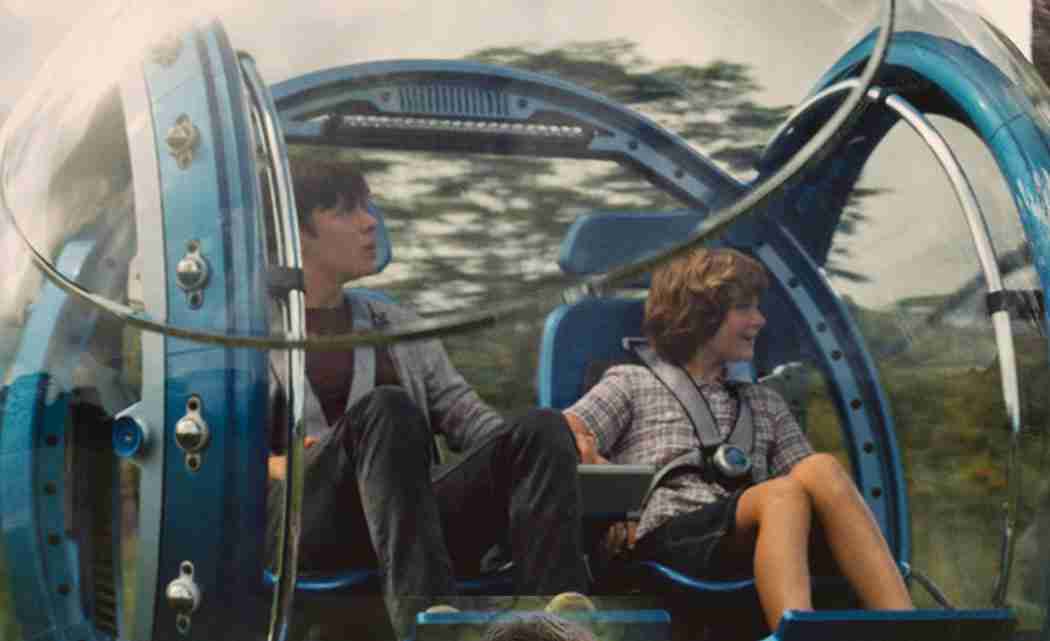By JAKE COYLE
AP Film Writer
Along the scaly spine of the Tyrannosaurus Rex runs the evolution of Hollywood blockbustering.
Twenty-two years ago, Steven Spielberg’s Jurassic Park set the standard for the kind of movie the industry has, ever since, bred like test-tube dinos. Their genes are genetically modified for the requisite computer-generated effects, merchandising tie-ins and theme park-style attractions.
While it’s easy to lament the kind of films born out of Spielberg’s box office record-setter, Jurassic Park was — and still is — a kind of pop perfection that has since been endlessly copied but rarely equaled.
Jurassic World, the latest incarnation of the franchise, is lacking the deft sense of wonderment, wit and suspense that guided the original. Director Colin Trevorrow, who ended his first and only other feature, Safety Not Guaranteed, with a Spielbergian magical twist, has instead made a more biting thriller hung up on the corporate mandates of post-Jurassic Park Hollywood.
What was once a charmingly hokey, if fatally misguided island resort off Costa Rica created by a wealthy, wide-eyed carnival showman has grown into a sprawling, monorail-traversed theme park worth billions. Jurassic World is a Dino Disney World, complete with long lines, bored teens and no shade. For better or worse, Jurassic World has done a very good job of recreating the theme park experience.
The feat of bringing dinosaurs back from extinction is no longer enough of a draw for the park, an obvious parallel to the pressure on Trevorrow to amplify entertainment and maintain franchise profit. New species of dinosaurs have been genetically created to satisfy the masses streaming through the gates. Some even get outfitted with electronic headsets, bringing us ever closer to the cinema of Dr. Evil: “sharks with frickin’ laser beams attached to their heads.”
“Bigger, louder, more teeth” is the demand of the park’s corporate overloads, which includes the serene CEO Simon Masrani (Irrfan Khan). But the real face of the new Jurassic World is operations manager Claire Dearing (Bryce Dallas Howard), a business suit-clad executive who calls the dinosaurs “assets” and describes the park in terms of revenue, not awe.
When her two nephews, a brooding teenager named Zach (Nick Robinson) and his younger, more excited brother Gray (Ty Simpkins) arrive for a visit, Claire still spends most of her time in the NASA-like control room or hosting potential sponsors.
The only one who seems to understand the dinosaurs is Chris Pratt’s Owen Grady, a kind of Velociraptor Whisperer. He’s trained a foursome of Raptors, each sporting their own nickname, by clicking sounds. He shouts commands (“Stand down, Blue!”’) that would sound more fitting for an over-friendly Russell Terrier than a resurrected Raptor.
When the dinosaurs’ intelligence is again underestimated, chaos returns to the park, courtesy of a wily, ferocious hybrid of mysterious genetic makeup called the Indominus Rex. He’s part T-Rex, part frog and all business when it comes to the chompy-chompy — none of that tenderness of the Tyrannosaurus. He’s a focus group-tested product for maximum appeal — again, just like Jurassic World.
The corporate commentary in the screenplay, by Trevorrow, Rick Jaff, Amanda Silver and Derek Connolly, comes across as heavy handed partly because it’s not smoothed by humor. If the modern blockbuster could use anything, it’s a rework by a few talented comedy writers. As a control room worker, Jake Johnson lands the only real laugh.
The 3-D Jurassic World is also an ugly, over-saturated movie; CGI has run amok here as much as dinosaurs. After nods to John Williams’ classic original, Michael Giacchino’s unremarkable new score punctuates the action, as the characters gradually come together from locations across the park. Vincent d’Onofrio’s opportunistic military contractor is also lurking.
Pratt, the Harrison Ford heir apparent, slides perfectly into the film. However, Howard makes the biggest impact as a corporate cog whose controlled world is imploding. It’s not a subtle portrait — she keeps her heels throughout — but her transformation is the most convincing one in a film full of dubious evolutions.












No Comment